
NGS’ NG/LNG SNAPSHOT – MARCH 2019, VOLUME I
National News Internatonal News
NATIONAL
City Gas Distribution – Retail PNG / CNG / LNG & AUTO LPGIOC, HPCL win maximum areas under tenth round of city gas biddingA total of 12 companies – including Indian Oil Corporation (IOC), Hindustan Petroleum Corporation (HPCL), Gujarat Gas and Gail Gas — managed to get 50 Geographical Areas (GAs) that were on offer under the tenth round of city gas distribution (CGD) bidding. read more The round, launched on November 8, is likely to see investments to the tune of Rs 50,000 crore. Indian Oil, HPCL and a little known consortium of LNG Marketing Pte, Atlantic Gulf & Pacific Company of Manila Inc won the maximum number of nine areas each during the current round, followed by six by Gujarat Gas and four by Gail Gas. On the closing bid date of February 5, at least 225 bids were received for the 50 geographical areas that were on offer under the tenth round of city gas distribution bidding. This included 124 districts (112 complete and 12 part) across 14 states. Other companies who were successful during the round included Indraprastha Gas (three), Torrent Gas (three), Adani Gas (two) and Bharat Gas (two). Three companies — including a consortium of Consortium of Think Gas Investments and Think Gas Distribution — IndianOilAdani Gas and Rajasthan State Gas won an area each. The Petroleum and Natural Gas Regulatory Board (PNGRB) in its 88th Board meeting held on February 26 approved issuance of Letters of Intent (LoI) to the 12 successful entities, said a government statement. As per the commitment made by the various entities in the 50 areas approved for issuance of letters of intent in tenth CGD Bidding Round, 2,02,92,760 domestic PNG (piped natural gas) connections and 3,578 CNG (compressed natural gas) stations for transport sector will be installed. This will be done in a period of eight years up to March 31, 2029. At present, CGD authorisation has been given by PNGRB for 178 geographical areas covering 280 districts (263 complete and 17 part) spread over 26 States and union territories. These cover approximately 50 per cent of India’s population (as per 2011 census) and 35 per cent of its geographical area. In addition, CGD operations are being carried out in five districts, authorisation for which is either under consideration of PNGRB or is sub-judice. With the completion of the current round, CGD would be available in 228 GAs comprising 402 districts spread over 27 States and Union Territories covering approximately 70 per cent of India’s population and 53 per cent of its geographical area. Further, the entities would be authorised to supply natural gas to industrial and commercial units in their respective GAs as per the limits provided in the CGD Authorisation Regulations. The letters of intent for successful entities will be handed over in a function to be held on March 1, 2019 in New Delhi. https://www.business-standard.com/article/printer-friendly-version?article_id=119022601230_1
show less
|
City Gas Distribution – Retail PNG / CNG / LNG & AUTO LPG Natural Gas / Pipelines / Company News Policy Matters / Gas Pricing / Others
|
SNAPSHOT: NATIONAL
Natural Gas / Pipelines / Company News
Northeast gas grid project likely to get Rs 5k crore from Centre
 Given the cost of the pipeline project at around Rs 9,300 crore, the viability gap funding will be more than 50%.The 1,600-km Indradhanush Gas Grid connecting the north-eastern states will get Rs 5,000-crore funding from the Centre.
Given the cost of the pipeline project at around Rs 9,300 crore, the viability gap funding will be more than 50%.The 1,600-km Indradhanush Gas Grid connecting the north-eastern states will get Rs 5,000-crore funding from the Centre.
read more
The Cabinet is likely to clear the proposal soon, according to sources.The gas grid will be developed by a joint venture of GAIL (India), ONGC, Indian Oil, Oil India and Numaligarh Refinery. Earlier this month, Prime Minister NarendraModi laid the foundation stone of the grid at Guwahati. The grid aims to cover and connect the entire north-east with natural gas pipeline and is expected to be completed in the next five years.Given the cost of the pipeline project at around Rs 9,300 crore, the viability gap funding will be more than 50%. In comparison, assistance given to the 2,539-km long Urja Ganga pipeline project connecting the eastern part of the country was 40% of the total cost.The Indradhanush Grid will be connected to the country’s main grid through a pipeline which will bring natural gas from Barauni to Guwahati. The capital city of Assam will then be connected with some of the main cities in the north-east, including Itanagar, Dimapur, Kohima, Imphal, Aizwal, Shillong, Agartala, Silchar, Gangtok and Numaligarh through three pipelines. The project aims to provide piped natural gas to households and liquefied natural gas for vehicles.
show less
Crisil sees gas demand rising by 3.5% annually till FY23
Gas demand is expected to post a 3.5 percent CAGR between 2018 and 2023 fiscals to 191-193 MMSCMD mainly on the back of the incremental demand expected to come from the fertiliser and city gas distribution (CGD) sectors, says a survey.
read more
According to Crisil, the conversion of naphtha-based urea plants, commissioning of new capacities under the new urea investment policy, and the revival of urea plants are likely to drive gas demand from the fertiliser sector.Also, the regulatory push for CGDs, including priority allocation of domestic gas for compressed natural gas and domestic piped natural gas (PNG) segments, connecting more cities and districts to the gas pipeline infrastructure, along with a ban on polluting fuels such as fuel oil and petcoke in Haryana, Rajasthan and UP will push demand up.Crisil, however, said demand from the power generation sector is expected to be subdued or only marginally improve, owing to accessibility and affordability challenges.The agency also expects that reintroduction of regulatory reforms, along with improved domestic gas supply, is necessary to revive gas demand from the power sector.“It is noteworthy that although gas demand from the power sector rose 3.5 percent to 32.9 MMSCMD in fiscal 2018, from 31.8 MMSCMD in fiscal 2017 (with no policy support), this was most likely because of lower spot prices of LNG,” it said.It can be noted that of late there has been a push to restart the LNG subsidy scheme to supply gas to stranded gas- based power plants.“Along with the subsidy proposal, gas supply from newly commissioned fields of ONGC including the Vashistha+S1 and the Daman fields, among others, would positively impact the sector from fiscal 2020,” it said.
https://www.hellenicshippingnews.com/crisil-sees-gas-demand-rising-by-3-5-annually-till-fy23/
show less
Government returns to old system of awarding oil and gas blocks based on exploration work commitment
 The government approved new rules for bidding out oil and gas blocks as it reverted back to a two-decade-old system of awarding areas based on exploration work commitment, granted marketing and pricing freedom to yet to be developed discoveries and allowed ONGC to induct private firms in existing fields.In a bid to boost flagging domestic production
The government approved new rules for bidding out oil and gas blocks as it reverted back to a two-decade-old system of awarding areas based on exploration work commitment, granted marketing and pricing freedom to yet to be developed discoveries and allowed ONGC to induct private firms in existing fields.In a bid to boost flagging domestic production
read more
and cut imports, the Cabinet headed by Prime Minister NarendraModi approved “a transparent, investor-friendly and competitive policy framework to accelerate exploration activities and provide impetus to expeditious production of oil and gas,” an official statement said.The new system of awarding blocks is not so prolific areas will replace a two-year-old method of awarding them to companies offering the highest revenue share to the government.The Cabinet approved awarding of exploration blocks in Category-I basins, where commercial production of hydrocarbon has already been established, on the basis of a mix of work commitment and revenue share in the ratio of 70:30, Finance Minister ArunJaitley told reporters here.Exploration blocks in Category II and III basins will be awarded purely based on the exploration work programme.This, he said, was based on the recommendation of a six-member panel, headed by NITI Aayog Vice Chairman Rajiv Kumar, which was formed on directions of Prime Minister NarendraModi last year to give a boost to domestic exploration.
He said there will be no revenue or production sharing in these contracts but the government will get a share in case of windfall gains.The trigger for such a sharing has been fixed at USD 2.5 billion in a financial year from the block.”The policy provides for shorter exploration period and fiscal incentive for the commencement of early production. The contractor will have full marketing and pricing freedom for crude oil and natural gas to be sold at arm’s length basis through a transparent and competitive bidding process.”
show less
PM unveils 1st phase of ‘PradhanMantriUrja Ganga’ gas pipeline
Prime Minister NarendraModi on Sunday dedicated to the Nation the first phase of the Jagdishpur – Haldia&Bokaro – Dhamra Natural Gas Pipeline Project (JHBDPL), popularly known as ‘PradhanMantriUrja Ganga’,
read more
and inaugurated the City Gas Distribution (CGD) network in Patna. Prime Minister dedicated and inaugurated the projects in the presence of Bihar Governor LaljiTandon, Bihar Chief Minister Nitish Kumar, Union Minister of Consumer Affairs, Food and Public Distribution Ram Vilas Paswan, Union Minister of Law & Justice and Electronics & Information Technology Ravi Shankar Prasad, Union Minister of State (I/C), Micro, Small and Medium Enterprises Giriraj Singh, Minister of State (I/C), Power and New and Renewable Energy R K Singh, Union Minister of State, Rural Development Ram KripalYadav, Union Minister of State, Health & Family Welfare Ashwini Kumar Choubey, Deputy Chief Minister of Bihar Sushil Kumar Modi and other dignitaries.The foundation stone of Phase 1 of ‘PradhanMantriUrja Ganga’ was laid by the Prime Minister on July 25, 2015 in Patna and the section from Phulpur – Dobhi – Barauni with Spurlines to Patna & Varanasi of length 585 Km has been completed. This section passes covers nine districts in Bihar (415 km) and three districts in Uttar Pradesh (170 km). The districts covered in Bihar are Patna, Kaimur, Rohtas, Aurangabad, Gaya, Nalanda, Lakhisarai, Begusarai and Sheikhupura.The total length of JHBDPL pipeline is 2,655 km and covers Uttar Pradesh, Bihar, Jharkhand, Odisha and West Bengal and being further extended from Barauni to Guwahati (Assam) through 729 km pipeline.The Patna CGD project is being executed with a planned expenditure of Rs. 360 crore over the next 5 years and overall Rs 1200 crore over 25 years.
show less
SNAPSHOT: NATIONAL
Policy Matters / Gas Pricing / Others
 Gas pricing, marketing freedom to help companies draw investments
Gas pricing, marketing freedom to help companies draw investments
The government’s decision to free up gas pricing and incentivise incremental output is likely to fire up investments in gas fields and raise production, said company executives and analysts.
read more
The Cabinet granted marketing and pricing freedom to all new gas discoveries whose field development plan (FDP) had yet to be approved. It also introduced fiscal incentive to operational fields for producing more than the current level. This is positive for us as we will be able to fast-track at least three projects that were ready to develop but commercially not viable,” said ONGC chairman ShashiShanker. These three discoveries have a producible reserve of 30 BCM and are expected to have a combined peak production of 10 MMSCMD, he said. For ONGC, the benefit will not be limited to just three discoveries. “We welcome the reform momentum and are looking forward to details of the policy to assess the impact on our production, including in current sites,” said a spokesperson for Vedanta. This is a positive step in terms of encouraging additional activities in the E&P sector and should help accelerate development of discovered resources. We have yet to review the notification, but at this point of time none of BP’s existing developments will be affected by this announcement,” said a spokesperson for BP. BP is a partner of Reliance Industries in several upstream projects in India. Pricing freedom would incentivise production. Producers can easily expect a price that is double that of domestic formula prices,” said K Ravichandran, analyst at credit rating agency ICRA. At present, the domestic formula price for gas is $3.36 per unit. Just about 25 of the total 115 gas discoveries made in blocks auctioned previously are under production as per the official data, and so 90 discoveries can potentially benefit from pricing freedom, Ravichandran said.
show less
Hydrocarbon exploration: DGH to be single window for nod to contractors
To fast-track the process of approvals for contractors of hydrocarbon fields, the government has decided to form a committee, headed by the Cabinet secretary, which will monitor the development work undertaken by the contractors right from the beginning.
read more
Also, the directorate general of hydrocarbons (DGH) will act as a single window for contractors for obtaining approvals. In addition, contract terms for blocks in unexplored basins will also be eased.These proposals were cleared by the Union Cabinet on Tuesday while approving changes in the Hydrocarbon Exploration and Licensing Policy (HELP) and will be notified soon.The Cabinet approved to incentivise contractors to go into unexplored areas wherein they will not have to pay a share of revenue to the government, unless windfall gains are made and require to pay only royalty and other statutory levies. For unexplored areas of producing basins, the bidding will continue to be based on the revenue sharing basis but more weightage will be given to work programme. Also, an upper ceiling of 50% on biddable revenue share has been prescribed apart from marketing and pricing freedom for those new gas discoveries whose field development plans are yet to be approved.The Cabinet also decided to bid out 64 fields of ONGC and 2 fields of Oil India to private companies. These fields contribute 6% to the companies’ combined production in order to step up output. The state-run companies will get lease rentals.The combination of the committee and delegation of responsibility to DGH will be notified separately.For areas under basins in category 2 and 3, which are unexplored areas and prospects have not been proven, the government also plans to change the contract terms. While at present, a contractor needs to go to the DGH’s management committee (MC) to take approvals. “Since there is no revenue sharing, the hassles of going to MC will be reduced. For instance, work programmewill need not be approved by MC which is the process now. They will have freedom to take financial decisions and just an intimation will do. No need for formal approval,” said the official.The Empowered Committee of Secretaries comprising of secretary (petroleum & natural gas), secretary (expenditure) and law secretary will approve the new contracts terms for category 2 and 3.
show less
Now ONGC can get private help for gas production
The Union cabinet cleared a proposal to allow state-run Oil and Natural Gas Corporation (ONGC) and Oil India Ltd (OIL) to induct private sector partners for production enhancement in their oil and gas blocks.“For production enhancement, bringing new technology, and capital, …
read more
[they] will be allowed to induct private sector partners,” a statement issued after the cabinet meeting said.The objective of the policy is to attract new investment in exploration and production (E&P) sector, it said.“Considering stagnant/declining domestic production of oil and gas, rise in import dependence and decline in investment in E&P activities, the need to bring further policy reforms was felt,” the statement said.It also said ONGC and OIL will prepare enhanced production profile to enhance production from existing nomination fields. Nomination fields are given to the two public sector companies without any competitive bid. The decision will facilitate the government and the state-run explorers to implement recommendations of a high-level committee that proposed to farm-out 97 exploration oil and gas fields from public sector ONGC and OIL to private energy firms, two ONGC officials said requesting anonymity.The Union cabinet also approved a new policy to boost electronics manufacturing by 2025 in the country and to generate 1 crore jobs.“We have a target of $400 billion [Rs 26 lakh crore] turnover by 2025. We want to achieve a 32% growth rate. It will give jobs to 1 crore people. We want to make India manufacturing and export-oriented [country]….,” Union minister Ravi Shankar Prasad said at a briefing here. He said technologies like artificial intelligence and defence electronics etc. would also be promoted.
show less
SNAPSHOT: NATIONAL
LNG Development / Shipping
ONGC Videsh Limited signs pacts to sell 9.5 mn tonnes of LNG
ONGC Videsh Limited (ONGC Videsh), a wholly owned subsidiary of state explorer ONGC, has struck long-term agreements to sell 9.5 MMTPA of liquefied natural gas (LNG) from their Mozambique Rovuma Offshore Area 1 project,
read more
and will take a final investment decision for the project in the first half of 2019, the state-run explorer said in a statement. Strategically located off the East Coast of Africa, the Mozambique Rovuma Offshore Area 1 project is ONGC Videsh’s key natural gas project. “The project is progressing towards developing initially an onshore LNG plant consisting of two LNG trains with total nameplate capacity of 12.88 MMTPA to support the development of the Golfinho-Atum field located entirely within Offshore Area 1,” ONGC said. “With the approval of the development plan in February 2018, ongoing resettlement implementation activities, site preparation and execution of these sale purchase agreements, the project is poised to take final investment decision in H1 2019,” it added. ONGC and other project developers have entered into an agreement with Tokyo Gas and Centrica LNG Company for sale of 2.6 MMTPA from the start of production until the early 2040s. Other sale agreements include 1.5 MMTPA for 13 years with CNOOC, 2 MMTPA for 13 years with Shell; one MMTPA for 15 years with BPCL, and one MMTPA for 20 years with Indonesia’s Pertamina. ONGC Videsh holds 16% interest in the Mozambique Rovuma Area-1 Offshore Project out of which 10% is held directly by ONGC Videsh and another six per cent interest is held through its 60% shareholding in Beas Rovuma Energy Mozambique Limited (BREML). The remaining 40 per cent in BREML is held by Oil India Limited. Currently, ONGC Videsh has 41 projects spanning across 20 countries.
show less
 GSPC seeks LNG cargo for March delivery: sources
GSPC seeks LNG cargo for March delivery: sources
India’s Gujarat State Petroleum Corp (GSPC) is seeking a liquefied natural gas (LNG) cargo for delivery in March, two industry sources said on Friday,
read more
February 15.The cargo is for delivery into the Dahej or Hazira import terminals over March 20 to 30, one of the sources said.Offers were due by Feb. 14 and remain valid until Feb. 15.GSPC has a separate tender seeking 12 cargoes for delivery over April 2019 to March 2020, which is not yet awarded.
https://www.hellenicshippingnews.com/gspc-seeks-lng-cargo-for-march-delivery-sources/
show less
IOCL’s Ennore LNG terminal ready, expects first consignment this month
Work on Indian Oil Corporation Ltd’s ₹5,151 croreLNG import terminal at Ennore has been completed and the facility is likely to receive its first consignment by this month end.
read more
The terminal also has regasification and storage capabilities and LNG road tankers loading facility.Sources in IOCL said that construction of the terminal and jetty facilities was complete and pre-commissioning and commissioning of various systems was in progress. Dredging work for the jetty and the channel that would bring cryogenic ships carrying natural gas in its liquid form is nearing completion. The natural gas would be used as gas-based feedstock in the fertiliser industry. It would replace naphtha.In other industries, it would be used to generate power or run furnace. The regasified LNG would also be supplied to Chennai Petroleum Corporation Ltd. refinery and fertiliser and petrochemical plants through a 23-km-long pipeline in Manali area from Ennore.Plans are afoot to expand the pipeline network to Sriperumbudur for meeting the requirements of automobile, tyre, glass manufacturing industries.It would be expanded thereafter up to Thoothukudi via Puducherry and Tiruchy. Similarly, the line would be expanded up to Hosur and Bengaluru, the sources said.
show less
Indian Oil buys commissioning cargo of LNG for new Ennore terminal
Indian Oil Corp (IOC) bought a commissioning cargo of LNG for its new Ennore terminal in south India, in a sign that India’s first terminal in the east coast is readying for start-up according to three industry sources.State-owned IOC bought a partial LNG cargo for delivery on
read more
Feb. 25 from commodities trader Gunvor, the sources said.It bought the cargo at about $9.50-9.90 per MMBtu, one of the sources said.The sources declined to comment as they were not authorised to speak with media due to the commercial sensitivity of the matter.
A Gunvor spokesman said the company does not comment on trading matters, while an IOC spokesman could not immediately be reached for comment.
Source: LNG Global
show less
Natural Gas / Transnational Pipelines / OthersShell, PetroChina spat holds up biggest Australian coal seam gas projectRoyal Dutch Shell and PetroChina are at loggerheads over gas sales pricing at their Arrow Energy joint venture, holding up development of Australia’s biggest coal seam gas resource, three industry sources said.PetroChina, the listed arm of China National Petroleum Corp (CNPC), is eager to start developing Arrow’s 5 trillion cubic feet (140 billion cubic meters) of gas in the Surat Basin in Queensland to turn around loss-making Arrow Energy, one of its key overseas assets.It is at the mercy of venture partner Shell, read more however, as the Anglo-Dutch oil company is also majority owner of Arrow’s biggest potential customer, Queensland Curtis LNG (QCLNG), a liquefied natural gas plant on an island off Queensland state.“PetroChina, as a 50-percent stakeholder in Arrow, expects to maximise interests from the JV versus QCLNG. But for Shell, it may be thinking of using its operator role at QCLNG to protect its interests,” said a Chinese oil industry executive, who declined to be named due to the sensitivity of the issues.PetroChina’s investment is “already bleeding and the firm wants to cut losses, hoping not to make further bad investment decisions,” the executive said.Shell and PetroChina acquired the Surat gas resource in a A$3.5 billion ($2.5 billion) takeover of Arrow in 2010. They had expected to reach a final investment decision on the Surat project in 2018, with first production around 2020, after the Arrow venture signed a 27-year deal at end-2017 to supply gas from Surat to QCLNG.PetroChina, though, is unhappy with the price in the sales agreement with QCLNG and the technical plan for developing the gas. This is now holding up final approvals, according to three industry sources familiar with the talks, who declined to be named due to the sensitivity of the matter.Shell Australia Chairman Zoe Yujnovich said on Feb. 13 that it is working through Chinese approval processes right up to senior levels of Beijing’s powerful state planner, the National Development and Reform Commission.Shell still hopes to secure approval in time to deliver first gas in 2021, Yujnovich said.When asked whether gas pricing was in contention, a Shell spokeswoman said that Shell supports both Arrow and QGC in developing the Surat gas project. QGC is the Shell subsidiary holding the company’s stake in QCLNG.The project would help unlock the majority of Arrow’s reserves for both the domestic and export markets, the spokeswoman said.
show less Azerbaijan to become a more significant supplier of natural gas to Southern Europe
read more Azerbaijan produced about 600 billion cubic feet (Bcf) of dry natural gas in 2017 and exported about 210 Bcf, according to EIA’s International Energy Statistics.Azerbaijan is planning to expand its natural gas exports to Europe. European Union (EU) leaders consider connecting Azerbaijan’s Shah Deniz natural gas field to Southern Europe to be a step toward the strategic goal of diversifying Europe’s natural gas supply. Southern and Eastern Europe, in particular, have limited supply options for natural gas because of geographic constraints and infrastructure limitations.The Trans-Balkan pipeline, which supplies Russian natural gas to the Balkan countries and Turkey through Ukraine, is one of the region’s only existing supply routes. In 2017, the Trans-Balkan pipeline transported about 600 Bcf of natural gas to the EU border in Romania, according to the International Energy Agency. Although the proposed Azerbaijani volumes—about 565 Bcf—will bring a smaller amount of natural gas to Southern Europe, they could help mitigate potential natural gas supply disruptions by providing another option to satisfy regional natural gas demand.The Shah Deniz field, which is about 40 miles southeast of Baku in the Caspian Sea, contains most of Azerbaijan’s natural gas. In 2017, the field produced about 360 Bcf of natural gas and about 19 million barrels of condensate. The main markets for Shah Deniz gas have been Azerbaijan, Georgia, and Turkey. In mid-2018, the field’s second stage of development, Shah Deniz 2, came online and began delivering natural gas to Turkey, which EIA includes in its definition of Southern Europe. Shah Deniz 2 will also add 38 million to 44 million barrels of condensate production capacity per year. The natural gas produced at Shah Deniz 2 will flow west through an expanded pipeline network known as the Southern Gas Corridor (SGC). Turkey started receiving Shah Deniz 2 natural gas in 2018 through the South Caucasus Pipeline Expansion (SCPX), which runs from Azerbaijan to the Georgia-Turkey border.The 1.5 billion cubic feet per day (Bcf/d) Trans-Anatolian Natural Gas Pipeline (TANAP), which runs from the Georgia-Turkey border and is being extended to the Turkey–Greece border, was completed in June 2018 and has provided additional natural gas capacity into Southern Europe. Volumes of natural gas shipped via TANAP reached 0.1 Bcf/d in 2018 and are expected to increase to 0.2 Bcf/d in 2019. The Trans Adriatic Pipeline (TAP), which is slated to run from the Turkey-Greece border to Italy, is expected to be completed in 2020.Of the expected 565 Bcf of annual natural gas production at Shah Deniz 2, Turkey has contracted for 211 Bcf, and European markets have contracted for the remainder. Some deliveries will go to Greece, Bulgaria, and potentially Albania, and the rest will be delivered to the Italian national transmission network before possibly flowing north to Central Europe.
show less Europe set for greater competition between pipeline gas, LNG: BPEurope is likely to see increased competition between pipeline gas supplies and LNG imports in the coming decades while domestic production continues its precipitous decline, BP said in its latest Energy Outlook. read more In its annual outlook, BP also said it sees global gas demand growing by 1.7%/year to 2040 under its “Evolving Transition” (ET) scenario to a total of 5.37 Tcm, up from a forecast of 1.6%/year in last year’s report.BP’s ET scenario is broadly in line with its base-case scenarios in previous reports, which assume that government policies, technology and social preferences continue to evolve in a manner and speed seen over the recent past.“In the ET scenario, European gas production declines by 40%,” BP said.Including Norway, gas output is set to drop from around 245 Bcm in 2020 to just 159 Bcm in 2040, it said.This, BP said, will “cause Europe’s import dependency to increase to around three-quarters in 2040.”That compares with import dependency of some 50% currently.“Europe’s existing infrastructure means it has the capacity to increase substantially its imports of either LNG or pipeline gas, especially from Russia,” it said.BP said there would be greater competition between the two, though the ease of transportation means pipeline gas has a “marked cost advantage” over LNG. BP said “Europe remains a key market, both as a ‘balancing market’ for LNG supplies and a key hub of gas-on-gas competition between LNG and pipeline gas.” Global LNG volumes are set to expand substantially, leading to a more competitive, globally integrated gas market, BP said.In the ET scenario, LNG trade more than doubles, reaching almost 900 Bcm in 2040 up from around 400 Bcm in 2017. “In terms of who is leading the charge in LNG exports, we see the US and Qatar emerging as the dominant sources,” he said. Those two countries alone are set to account for around 40% of all LNG exports by 2040, BP said. Asia remains the dominant market for LNG imports, although the pattern of imports within Asia shifts, with China, India and “Other Asia” overtaking the more established markets of Japan and South Korea, and accounting for around half of all LNG imports by 2040. https://www.hellenicshippingnews.com/europe-set-for-greater-competition-between-pipeline-gas-lng-bp/
show less |
Natural Gas / Transnational Pipelines / Others Natural Gas / LNG Utilization – Roadways – E-mobility LNG as a Marine Fuel / Bunkering/ LNG Shipping Technological Development for Cleaner and Greener Environment Hydrogen & Bio-Methane
|
SNAPSHOT: INTERNATIONAL
Global LNG Development
Fight against pollution to lift LNG demand, says Shell
 Company expects global liquefied natural gas trade to rise 11% in 2018 as China increases consumption in fight against carbon emissions. Global liquefied natural gas (LNG) trade is set to rise 11% this year as China leads a global drive to reduce pollution and tackle carbon emissions,
Company expects global liquefied natural gas trade to rise 11% in 2018 as China increases consumption in fight against carbon emissions. Global liquefied natural gas (LNG) trade is set to rise 11% this year as China leads a global drive to reduce pollution and tackle carbon emissions,
read more
Royal Dutch Shell says in an annual LNG report. Shell’s forecasts, which see LNG demand rising to 354-million tons this year and to 384-million tons in 2020, reflect a burgeoning industry with new production facilities opening in Australia, the US and Russia and more countries becoming importers by constructing receiving terminals. Shell, the world’s largest buyer and seller of LNG as well as a major producer, said that China is set to double its LNG consumption by 2035 after it accounted for over half of the growth in traded volumes last year. Natural gas is expected to be the fastest-growing source of energy in the coming decades, displacing coal in power plants and heavy industries. LNG, for which natural gas is chilled to minus 160°C, allows transportation of the fuel from gas fields to demand centres. Asia dominates the market with Japan remaining the top buyer. China became the second largest in 2017. Shell is also betting on a rapid increase in demand for LNG in the ground transport and marine sectors. Global LNG trade rose by 27 MMTPA last year, with Chinese demand growth accounting for 16 MMT of that. Due to the uneven progress of developing liquefaction-export facilities on the one hand and regasification-import terminals on the other, many analysts see the global market becoming oversupplied if not this year then next year. But most, including Shell, also see a supply crunch around the mid-2020s because, at the moment, there are not enough liquefaction facilities being planned, financed and built. However, Shell said the duration of contracts signed last year had on average more than doubled to 13 years. Spot trade amounted to 1,400 cargoes in 2018, which was close to 30% of the global market compared with 25% in 2017, Shell said. Spot trade, the buying and selling of cargoes for immediate delivery, signals a more flexible, mature market. Shell sold 77-million tons of LNG in 2018, about 22% of the global market share, and produced about 35-million tons.
show less
Global LNG-Asian prices drop to 17-month low on tepid demand
Asian spot prices for liquefied natural gas (LNG) continued their downward spiral this week, hitting a 17-month low as the market moved further away from the peak winter demand period and inventories remained high in the region.Spot prices for March delivery to Asia LNG-AS fell to $6.50 per MMBtu
read more
this week, down 20 cents from the previous week to their lowest since Sept. 8, 2017, trade sources said.April prices are estimated at about $6.30 per MMBtu, the sources said.Demand in China remained tepid as many factories there were still shut for Lunar New Year celebrations, trade sources said. The Lunar New Year fell on Feb. 5 and 6 this year, but the festival typically lasts for about two weeks.While temperatures in Beijing and Shanghai dipped below normal briefly, they are expected to get warmer next week, weather data from RefinitivEikon showed.Several unplanned outages failed to lift prices, indicating just how weak demand is currently, trade sources said.Loadings of LNG cargoes at Malaysia’s Bintulu export plant, operated by Petronas, were delayed this week due to lower production, sources have said.But the delay was due to minor glitches at the plant which have since been resolved, one of the sources said.Woodside Petroleum’s Pluto LNG facility has also resumed full output after a brief outage.Natural gas flows to U.S. LNG export terminals were expected to increase in coming days after collapsing to their lowest level in almost a year as fog clears along the U.S. Gulf Coast.Analysts said the drop was due to maintenance work at the LNG terminals and pipelines feeding them, and fog, which had forced several vessels to drop anchor in the Gulf of Mexico.Indonesia’s Pertamina sold four cargoes it had offered for March 2019 to early 2020 from its Bontang plant, although price and buyer details could not immediately be confirmed.
https://www.hellenicshippingnews.com/global-lng-asian-prices-drop-to-17-month-low-on-tepid-demand/
show less
Can any country dethrone Qatar as top LNG exporter?
this week, down 20 cents from the previous week to their lowest since Sept. 8, 2017, trade sources said.April prices are estimated at about $6.30 per MMBtu, the sources said.Demand in China remained tepid as many factories there were still shut for Lunar New Year celebrations, trade sources said.
read more
The Lunar New Year fell on Feb. 5 and 6 this year, but the festival typically lasts for about two weeks.While temperatures in Beijing and Shanghai dipped below normal briefly, they are expected to get warmer next week, weather data from RefinitivEikon showed.Several unplanned outages failed to lift prices, indicating just how weak demand is currently, trade sources said.Loadings of LNG cargoes at Malaysia’s Bintulu export plant, operated by Petronas, were delayed this week due to lower production, sources have said.But the delay was due to minor glitches at the plant which have since been resolved, one of the sources said.Woodside Petroleum’s Pluto LNG facility has also resumed full output after a brief outage.Natural gas flows to U.S. LNG export terminals were expected to increase in coming days after collapsing to their lowest level in almost a year as fog clears along the U.S. Gulf Coast.Analysts said the drop was due to maintenance work at the LNG terminals and pipelines feeding them, and fog, which had forced several vessels to drop anchor in the Gulf of Mexico.Indonesia’s Pertamina sold four cargoes it had offered for March 2019 to early 2020 from its Bontang plant, although price and buyer details could not immediately be confirmed.
https://www.hellenicshippingnews.com/global-lng-asian-prices-drop-to-17-month-low-on-tepid-demand/
show less
Thailand’s PTT plans up to $11 bln investment in LNG and infrastructure
Thai energy company PTT Pcl plans to invest up to 354.7 billion baht ($11.3 billion) over the next five years to boost its natural gas portfolio and energy infrastructure, a senior executive said.PTT plans to invest 167.1 billion baht from 2019 to 2023, of which 44% will be allocated to expand its gas business and firm up infrastructure,
read more
ArawadeePhotisaro, Vice President for Corporate Strategy, told reporters at a news conference.“We want to become a global LNG portfolio player … and build an LNG value chain,” Arawadee said, adding that its upstream arm, PTT Exploration and Production Pcl, would acquire assets while other units would focus on building receiving terminals, liquefaction and regasification plants.Natural gas is becoming a primary energy source for Thailand because it is easier to transport, cleaner and has lower costs, she added.PTT also set aside an additional 187.6 billion baht to invest in new technologies and expand its core business should opportunities arise, Arawadee said.“We have to build energy security for the country and also add value to from our petrochemical products,” she said.Other investment areas include expansion of petrochemical products capacity and its electricity business.
PTT on Thursday reported net profit of 119.7 billion baht for 2018, down 11.5% from a year earlier. Gas accounted for about a third of operating income, bringing in 76 billion baht, up 12.8%.
show less
Russia’s Far East LNG hub may become price benchmark for Asia-Pacific
 The largest liquefied natural gas (LNG) producer in Russia, Novatek, plans to build an LNG terminal on the Kamchatka Peninsula to boost supply to the fast-growing Asian markets.“If we dream for a while, then the hub we plan in Kamchatka
The largest liquefied natural gas (LNG) producer in Russia, Novatek, plans to build an LNG terminal on the Kamchatka Peninsula to boost supply to the fast-growing Asian markets.“If we dream for a while, then the hub we plan in Kamchatka
read more
with a capacity of 120 MMT may also become one of gas sales indices in the Asia-Pacific,” said Novatek’s Chief Executive Officer Leonid Mikhelson.He added that gas pricing will hopefully be less pegged to oil prices.Novatek plans to develop the LNG throughput terminal project on the Kamchatka Peninsula in Russia’s Far East, close to the Asian markets. With a capacity of 20 million tons per year, the project is scheduled for commissioning in 2022-2023.According to Mikhelson, Novatek forecasts significant growth in the LNG market in the midterm. The company estimates that LNG consumption volumes may more than double to 700 million tons in 2030.The Russian firm has recently signed a preliminary agreement with Japan’s Saibu Gas, under which the companies will consider potential cooperation in entering the end-consumer LNG market in Asia.
show less
Warm winter pushes LNG to 17-month low in biggest market
Liquefied natural gas prices in North Asia, the world’s biggest market for the fuel, have slumped to the lowest in 17 months as the peak demand season ends with a whimper.
read more
Benchmark LNG Japan/Korea Marker futures have tumbled 31% since the start of the year as a milder-than-normal winter left buyers in Japan, South Korea and China with brimming stockpiles and little need to dip into the spot market. At the same time, a flurry of prompt supply, from Australia to Indonesia, has kept the market well supplied.Nearly all end-users have moved onto buying April cargoes, officially marking the end of the winter peak-procurement season and dashing any bullish hopes for a last-minute supply crunch. Analysts at Wood Mackenzie see spot prices extending declines to bottom at $5.80/MMBtu in June before crawling back to $7.40 by December.“Warm weather has meant that Japanese and particularly South Korean storage levels are still at very high levels,” said Nicholas Browne, an analyst at Wood Mackenzie. Going forward, “we expect to see a decline in Japanese and South Korean demand this year due to new coal capacity and restarting nuclear.”Benchmark LNG Japan/Korea Marker futures for April delivery declined 3.1% on Thursday to $6.25/MMBtu, the lowest for front-month prices since September 2017.Recently in the physical market, Japan’s Tohoku Electric Power bought a cargo on a delivered basis for April 1-5 at between $6.20 and $6.30/MMBtu. BP sold to Gunvor Group on the Platts Market-on-Close trading window Thursday a cargo for delivery to north Asia during April 15-17 at $6.20.The LNG slump comes as crude oil has been on a tear, with Brent futures jumping 24% this year. LNG spot prices, which in the past tracked closely to oil because most of the region’s purchases are indexed to crude, are about 9% the price of Brent, the lowest in nearly three years.
https://www.hellenicshippingnews.com/warm-winter-pushes-lng-to-17-month-low-in-biggest-market/
show less
Australia’s east coast LNG plants unlikely to ever hit full capacity -study
Australia’s three east coast LNG plants are unlikely to ever run at their combined full capacity of 25.3 MMTPA as there is not enough gas to feed them and meet local demand, a study released on Thursday, February21 said.The three plants –
read more
Queensland Curtis LNG, Australia Pacific LNG and Gladstone LNG – were the world’s first LNG exporters to use coal seam gas rather than gas from conventional fields.But the wells they source their gas from in Australia’s Surat and Bowen basins in Queensland state have turned out to be less productive than expected.As a result, the three plants – each with two processing units – have been running below capacity, operating at average 82% in 2018.“Unfortunately, there are serious headwinds coming and the outlook is less rosy as the industry over-reached by building three projects of six trains,” EnergyQuest CEO Graeme Bethune said in a statement.QCLNG, run by Royal Dutch Shell averaged 87% capacity, and GLNG, run by Santos, only 65%, EnergyQuest, an industry consultancy, said.In a detailed study of government and company drilling and production data and reserves booked at coal seam gas (CSG) prospects and licenses, it found that only 56% of booked proven and probable reserves had shown any commercial productivity.“The emerging and critical shortages are resulting from the fact the CSG LNG projects were sanctioned on ambitious estimates of proved and probable (2P) reserves, not proven reserves (1P) that underpin conventional LNG projects,” Bethune said.He predicted that by 2025 at least two trains would have to be shut to keep four trains running at full capacity, which would reduce medium-term exports to around 17 MMTPA, down from about 21 MMT in 2018.About 70% of exports go to China, 16% to South Korea and 9% to Japan.Exacerbating the problem, the producers have come under pressure to step up gas sales into the domestic market, with supply in Australia’s southeast falling as ageing offshore fields dry up and as states restrict drilling onshore.
Trump inclined to extend China trade deadline. The three projects supplied about 25% of Australia’s eastern demand in 2018.“With dwindling production from southern gas fields, the political pressure on the LNG producers to divert gas to the domestic market is likely to intensify,” Bethune said.
Source: LNG Global
show less
Anadarko signs 20-year LNG deal with Indonesia’s Pertamina
Anadarko Petroleum Corp. said that all co-venturers of the Mozambique LNG1 Company Pte. Ltd. signed an accord to sell one million tons per year of liquified natural gas to Indonesian state oil company Pertamina
read more
for 20 years.”Indonesia is expected to be one of the fastest growing natural gas markets in Asia and Pertamina, the national energy company of Indonesia, will play a key role in meeting Indonesia’s long-term energy needs,” Mitch Ingram, Anadarko executive vice president for international, deepwater and exploration, said in a news release.”The Anadarko-led Mozambique LNG project is well positioned to make a sanctioning decision in the first half of this year, as we remain on track to complete the project financing process, secure the necessary approvals, and have executed a sufficient volume of long-term Sales and Purchase Agreements, which now total more than 9.5 MMTPA,” Ingram said.Houston-based Anadarko is developing Mozambique’s first onshore LNG facility consisting of two initial LNG trains with a total nameplate capacity of 12.88 MMTPA to support the development of the Golfinho/Atum field located entirely within Offshore Area 1.Anadarko has a 26.5% working interest. Co-venturers include ENH Rovuma Área Um, S.A. with 15%, Mitsui E&P Mozambique Area1 Ltd. with 20%, ONGC Videsh Ltd. with 10%, Beas Rovuma Energy Mozambique Limited with 10%, BPRL Ventures Mozambique B.V. with 10%, and PTTEP Mozambique Area 1 Limited with 8.5%.
Source: LNG Global
show less
China to build new LNG terminals in southern Guangdong
China will build new liquefied natural gas (LNG) terminals and expand the capacity of existing terminals in its Greater Bay area, China’s cabinet said, according to a report by official news agency Xinhua.Beijing wants to turn Hong Kong, Macau
read more
and nine neighbouring cities in southern Guangdong province into an economic powerhouse dubbed the Greater Bay Area.Under new guidelines for development of the area approved by the cabinet, the aim is to build a low-carbon and efficient energy system.China will accelerate construction of large-scale oil reserve sites and consider launching a futures exchange for carbon emissions trading in Guangzhou.
https://www.hellenicshippingnews.com/china-to-build-new-lng-terminals-in-southern-guangdong/
show less
Commonwealth LNG sees Euro Demand for LA Gas Terminal
 Commonwealth LNG has received commitments from European buyers to take almost half of the liquefied natural gas (LNG) from its planned 8.4-million-tonnes-per-year export terminal in Louisiana, Chief Executive Officer Paul Varello said.
Commonwealth LNG has received commitments from European buyers to take almost half of the liquefied natural gas (LNG) from its planned 8.4-million-tonnes-per-year export terminal in Louisiana, Chief Executive Officer Paul Varello said.
read more
The Commonwealth project is one of more than 10 LNG export terminals under development or construction in the United States along the coast of the Gulf of Mexico to take advantage of soaring demand for the supercooled fuel amid booming gas production.”We have to work hard to get closer to the full 8 million tonnes in heads of agreements to allow us to feel good about getting 6 million tonnes in final agreements,” he said, because prospective buyers are overcommitting to projects.Varello said the company will process natural gas into LNG at the terminal at “well below” $2.50 per MMBtu for buyers signing 20-year supply contracts.The company expects to make a final investment decision by the third or fourth quarter of next year after getting final environmental approvals and aims to begin shipping LNG in 2024.Varello, who is in Tokyo pitching LNG to importers in the country while attending an industry conference, said Japanese buyers were reluctant to sign off-take agreements.The resistance to signing long-term contracts is coming because electric utilities are getting nuclear reactors back online after prolonged shutdowns following the 2011 Fukushima disaster and the rising use of renewables, Varello said.The Commonwealth project is one of many that could be approved this year and next, as worldwide consumption of LNG is expected to more than double to 550 million tonnes a year by 2030.U.S. gas production has soared to new records, bolstered by shale production, increasing the need for export capacity to absorb the supply.Energy companies are expected to make final decisions on projects that could add more than 60 million tonnes per year of LNG capacity this year, a record.Qatar Petroleum and Exxon Mobil Corp said earlier this month they will proceed with a $10 billion project that will expand a LNG export plant in Texas.
https://www.aogdigital.com/pipelines/item/8869-commonwealth-lng-sees-euro-demand-for-la-gas-terminal
show less
Gazprom grabs record share of Europe gas market despite challenges
Russia’s Gazprom increased its share of the European gas market last year despite a rising challenge from imports of U.S. liquefied natural gas (LNG), company officials told investors in Hong Kong.
read more
The meeting came a day after the surprise departure of deputy chief executive Alexander Medvedev who has spearheaded Gazprom’s export efforts for the past 16 years.Gazprom’s share of the European gas market rose to a record high 36.7 percent last year from 34.7 percent in 2017, the company said.This, despite calls from the European Commission for EU states to diversify away from Russian energy in the wake of Moscow’s annexation of Crimea in 2014.Gazprom has also faced a rise in imports of U.S. LNG into Europe, which saw a near fivefold increase this winter.The company would aim to retain a market share in Europe of no less than 35 percent in coming years, she said. Europe accounts for around two-thirds of Gazprom’s gas sales.Gazprom’s average gas price in Europe was $245.50 per 1,000 cubic metres last year and it expects a price of $230-$250 this year, Burmistrova said.In Russia, Gazprom competes with oil producer Rosneft and private gas firm Novatek. Both have long lobbied for the right to export gas by pipeline but for now are limited to LNG sales.On Tuesday, Novatek boss Leonid Mikhelson met Russian President Vladimir Putin, telling him that Novatek plans to raise its 2030 LNG output target to 70 MMT from 57 MMT in a year or two – putting it on par with top producer Qatar.Novatek last year launched its $27 billion Yamal LNG plant, which can produce 16.5 MMTPA.As for Gazprom, it plans to build a third line at its Sakhalin-2 plant in Russia’s Far East in 2023-2024, Burmistrova said.
The company is looking to account for 25 percent of China’s gas imports by 2035, a management committee member told the investors in Hong Kong.It plans to supply China via the 38 billion cubic metres (bcm) per year Power of Siberia pipeline. China is set to become Gazprom’s second largest market after Germany, where it sold a record 53.4 bcm of gas last year.
Source: LNG Global
show less
SNAPSHOT: INTERNATIONAL
Natural Gas/LNG Utilization – Roadways – E-mobility
 Spain’s MOVES Plan puts brakes on NGV support
Spain’s MOVES Plan puts brakes on NGV support
In Madrid on February 15, Spain’s Council of Ministers approved a proposal of the Ministry for the Ecological Transition which regulates the incentive program for efficient and sustainable mobility (MOVES Program).
read more
Unlike the previous two iterations and despite a plea from SEDIGAS, the Spanish natural gas association, for greater recognition of the role of renewable gas in reducing transport-related emissions, most natural gas vehicles have been excluded from the incentive scheme.In one sense, this can be seen as a compliment for the natural gas vehicle industry in Spain, which the government says now stands on an equal footing with conventional players. But that is on price alone; Spain has about 14,300 natural gas vehicles compared to more than 27 million vehicles overall – from that perspective equalization is an unhelpful description. It fails to recognise that while great progress has been made, natural gas for transportation is still finding its feet in Spain. Furthermore, incentives are not about making vehicles cheaper, they are about building market mass and supporting fuel alternatives to drive down emissions.The Decree says vehicles M1, N1, M2 and M3 powered by Natural Gas are excluded from the aid. Class N2 (light trucks or lorries) and N3 (trucks) vehicles powered by Compressed Natural Gas (CNG) or Liquefied Natural Gas (LNG), including bi-fuel and dual-fuel vehicles, are still eligible for support. However, the amount of funding set aside for that support has been drastically reduced.
https://www.ngvglobal.com/blog/spains-moves-plan-puts-brakes-on-ngv-support-0220[Edited]
show less
CNG station for Class 8 heavy trucks will open soon in Ontario, Canada
Envoy Energy Fuels Inc. and Truk-King Logistics Inc. have started construction on a public CNG station in Fort Erie, Ontario.
read more
The CNG cardlock station, located along Ontario’s QEW highway and just minutes from the U.S.-Canada Peace Bridge border, will include four fast-fill lanes for heavy-duty vehicles and two dedicated lanes for filling large capacity tube trailers for Envoy Energy’s mobile CNG refueling operations. It has the capacity to fuel Class-8 trucks in approximately 5 minutes and over 200 trucks each day. The opening of the station is planned for April 2019.
Truk-King was the first third-party carrier fleet in Ontario to adopt CNG when they switched one third of their fleet to CNG in early 2018 and plans to have its entire fleet of Class-8 trucks running on natural gas by the end of 2019. The station will provide Truk-King access to a reliable source of CNG fuel while removing emissions control issues with diesel engines and reducing their fuel costs and overall carbon footprint.When completed, the CNG station will be strategically located for heavy duty trucks along major shipping corridors while providing easy-access and fast-fill capabilities for use by third-party fleets. The collaborative team members for this station include ComTech Energy, Enbridge Gas Inc. and Natural Resources Canada.
show less
First liquefied natural gas mobile unit starts operations in South America
The HAM Group designed, manufactured and put into operation the first LNG mobile station in South America. Located in Trujillo, Perú, the unit -also known as Micro Refueler- was commissioned by Quavii (brand of Gases del Pacífico) and will allow the refueling of heavy cargo vehicles and passenger transportation.
read more
The station was launched at the beginning of February.The Micro Refueler has a cistern made by Vakuum, a company of the HAM Group. This cistern, with an internal and external body of stainless steel, has a capacity of 25m3 of LNG, which will allow to refuel a total of 30 vehicles, thanks to its modern system with integrated dispenser. The unit has the highest level of automation and a built-in payment management system, which makes it a unique equipment in the world.Before the launch, Vakuum specialists trained the different professionals in charge of the operation of the station. On February 7, the first refueling was carried out, with the presence of Osinermin (government’s agency that manages energy and mining investment) and members of the Ministry of Hydrocarbons. The first refueling was made with a Scania G410 tractor, allowing to satisfactorily verify all the service features of the LNG mobile unit.In mid-February, the Micro Refueler unit was presented to the local press and in the next few months Quavii will incorporate new LNG trucks, both from Scania and from other manufacturers.With the Micro Refueler, HAM has collaborated with Quavii to take the first step in the implementation of the Green Corridor project, which aims to encourage the construction of LNG stations along the entire northern coast of Peru. In recent years HAM has opted for its development in Peru through its subsidiary HAM Peru and is considering in its strategic plan the expansion to other Latin American countries.
show less
EuroCementplans 1000 KAMAZ natural gas trucks
 EuroCement group, an international industrial Holding company and Russia’s leading producer of construction materials, has concluded a cooperation agreement with Russian truck manufacturer KAMAZ,
EuroCement group, an international industrial Holding company and Russia’s leading producer of construction materials, has concluded a cooperation agreement with Russian truck manufacturer KAMAZ,
read more
that will lead to the acquisition of one thousand natural gas powered KAMAZ trucks.The agreement was concluded at the Russian Investment Forum in Sochi, signed by Sergey Kogogin, General Director of KAMAZ PJSC, and Mikhail Skorokhod, President of EuroCement group.Effective transportation of construction materials to consumers is an important component for successful implementation of the national project “Housing and Urban Environment” within which by 2024 in the country 120 thousand sq.m of housing will be annually constructed.The EuroCement group will be engaged in building the infrastructure for the vehicles being purchased together with Gazprom Gas Engine Fuel LLC, with which KAMAZ PJSC also has long-term cooperation and successful experience in implementing such projects.
https://www.ngvglobal.com/blog/eurocement-plans-1000-kamaz-natural-gas-trucks-0215[Edited]
show less
Record order of 37 Iveco Crossway NP in France’s Dracénie Region
that will lead to the acquisition of one thousand natural gas powered KAMAZ trucks.The agreement was concluded at the Russian Investment Forum in Sochi, signed by Sergey Kogogin,
read more
General Director of KAMAZ PJSC, and Mikhail Skorokhod, President of EuroCement group.Effective transportation of construction materials to consumers is an important component for successful implementation of the national project “Housing and Urban Environment” within which by 2024 in the country 120 thousand sq.m of housing will be annually constructed.The EuroCement group will be engaged in building the infrastructure for the vehicles being purchased together with Gazprom Gas Engine Fuel LLC, with which KAMAZ PJSC also has long-term cooperation and successful experience in implementing such projects.
https://www.ngvglobal.com/blog/eurocement-plans-1000-kamaz-natural-gas-trucks-0215[Edited]
show less
Venezuela gives a boost to the development of NGV infrastructure
Autogas de Petróleos de Venezuela, S.A. (PDVSA) and the government of Vargas have opened the first natural gas service station in the state. The refueling facility, located in Catia La Mar parish, will be able to supply local public transport system “Bus Vargas”,
read more
as well as commercial fleets and private vehicles.In its initial phase, the CNG station will have the capacity to supply 35 vehicles per day and will be managed by the Vargas state government with the aim of improving the transportation service and facilitating the shuttle of residents to their destination.On the other hand, the Manager of Autogas Domingo Castillo highlighted the investment of the national government and PDVSA in quality technology to guarantee the operation and efficiency of the CNG station. “We have state-of-the-art equipment and highly qualified personnel to operate this and all natural gas outlets in the country,” he said.The Venezuelan government and the country’s main industry are working to promote the use of natural gas as an alternative fuel and maximize its social, economic and environmental benefits for the country.
show less
HCM City targets 75% of buses with clean fuel by 2020
The Ho Chi Minh City Department of Transport aims to have 75% of the new buses running on clean fuel by the end of 2020.Under a plan to buy 1,680 new buses for the 2018-20 period, the city expects to have more than 1,000 of the buses running on compressed natural gas (CNG) by the end of 2020.
read more
However, the plan has faced insufficient subsidies, lack of financial support from the city, and setbacks in building CNG fueling stations, according to the department.Because of the lack of investment in CNG fueling stations and attractive subsidy incentives, only 428 CNG buses were operating as of the end of last year.CNG vehicles cost 20 per cent more than normal buses, according to bus companies.For instance, the price of an 80-seat bus using gasoline is about VNĐ2.4 billion (US$103,437), while a CNG bus of the same size costs VNĐ2.75 billion.The city has yet to implement a subsidy incentive for environmentally friendly vehicles.NguyễnVănThảo, director of Transport Cooperative No 15, said the subsidy level for CNG buses was the same as that of gasoline-fueled vehicles. The city’s four CNG filling stations are all located far from the city centre (in ThủĐức, TânBình, BìnhChánh districts, and District 12), leading to increased operational costs for bus operators and more time for bus refueling.In addition, transport operators must pay 30 per cent of the cost to buy a bus, and for the remaining 70 per cent, they must take out bank loans with most of the interest rate subsidised by the city, according to Thảo.The city needs a total of 19 CNG filling stations to accommodate the rising number of CNG buses in the coming years, according to Trung. The city has thus far identified 11 possible locations for the stations.In addition, the transport department has urged the State-owned oil group (PetroVietnam) to stabilise the prices of CNG supplied to public transport companies in the city. It wants PVN to keep CNG prices at 66 per cent of that of diesel.HCM City aims to replace about 3,120 buses with new buses in the 2018-2020 period.
https://elevenmyanmar.com/news/hcm-city-targets-75-of-buses-with-clean-fuel-by-2020-asianewsnetwork[Edited]
show less
SNAPSHOT: INTERNATIONAL
LNG as a Marine Fuel/Bunkering/ LNG Shipping
Repsol will supply Brittany Ferries’ LNG-fueled ferry in UK-Spain route
 Brittany Ferries has signed an agreement with Repsol for the delivery of LNG to its Spanish operations. A letter of intent between the two companies provides the basis for the long-term supply of LNG and
Brittany Ferries has signed an agreement with Repsol for the delivery of LNG to its Spanish operations. A letter of intent between the two companies provides the basis for the long-term supply of LNG and
read more
key shoreside infrastructure to the new LNG-powered cruise-ferry Salamanca, which is scheduled to enter service in 2022. Under the agreement, Repsol will install a fixed quayside LNG storage and supply system in one of Brittany Ferries’ two Spanish ports, Santander or Bilbao. Repsol will then supply LNG bunker fuel to Brittany Ferries’ Salamanca during the ship’s regular visits on routes linking Portsmouth, UK and northern Spain. A final decision on the location of the terminal will be made later in 2019. Frédéric Pouget, Brittany Ferries’ Fleet and Operations Director said: “Salamanca will be our second LNG-powered ship, but the first to operate to and from Spain. Repsol’s competence in the field of LNG bunkering technology and environmentally-friendly fuels along with its capacity to deliver to us makes it an obvious partner for us. This new terminal will allow for regular, flexible and reliable deliveries whilst Salamanca is alongside, benefiting our operations and scheduling. Meanwhile the use of LNG will offer much wider benefits to the environment.” Repsol’s Wholesale & Gas Trading Director, Laura Rejón-Pérez also commented: “We are delighted to enter into this long term agreement with Brittany Ferries, a company clearly engaged with innovation and the improvement in its environmental footprint by using LNG as bunker fuel.”
show less
New agreement signed to secure LNG bunkering in northern Europe
Marine LNG Zeebrugge, a joint venture of the Gas4Sea partners (ENGIE, Mitsubishi Corporation and NYK) has signed an agreement with the Norwegian multinational energy group Equinor for supplying their four crude shuttle tankers with LNG as marine fuel in particular in the port of Rotterdam.
read more
The four planned dual fuel vessels are to come into service in early 2020; they will be operated by Equinor in Northern European seas. Marine LNG Zeebrugge will supply fuel using the LNG bunkering vessel ENGIE Zeebrugge which started operations in 2017. She is currently performing ship-to-ship LNG bunkering services in the port of Zeebrugge, in Belgium. ENGIE Zeebrugge holds an LNG capacity of 5,000 m3 and is designed to serve a full range of shipping customers. Gas4Sea is a commercial brand jointly launched by ENGIE, Mitsubishi Corporation and NYK in 2016 to develop the use of LNG as a sustainable, reliable, safe and cost-effective alternative to conventional oil-based marine fuels. Its purpose and ambition is to accompany the shipping sector in the upcoming transition towards a greener maritime environment, in Europe and worldwide. Mitsubishi is developing the LNG marine fuel supply business as one which will contribute to efforts aimed at simultaneously generating economic value, societal value, and environmental value for societies.
show less
Mitsubishi Shipbuilding holds christening ceremony for next-generation LNG carrier “MARVEL CRANE”
Mitsubishi Shipbuilding Co., Ltd., a Group company of Mitsubishi Heavy Industries, Ltd. (MHI) based in Yokohama, held a christening ceremony on February 21 for the next-generation LNG carrier currently under construction for Mitsui & Co., Ltd.
read more
The new ship, named MARVEL CRANE, is a state-of-the-art LNG carrier with a design that significantly improves both LNG carrying capacity and fuel performance due to the adoption of a more efficient hull structure and hybrid propulsion system. Completion is scheduled for March 2019, after which the MARVEL CRANE will be put into service, transporting LNG for the Cameron LNG Project in the U.S., in which Mitsui & Co. is participating.The christening ceremony, held at the Koyagi Plant of MHI’s Nagasaki Shipyard & Machinery Works, was attended by many people involved with the project. Mitsui & Co., Ltd. Counselor Hiroyuki Kato announced the name of the ship, while his wife performed the ceremonial rope cutting.The MARVEL CRANE is the first of two LNG carriers of the same design being constructed for Mitsui & Co., Ltd. It has a length of 293.0m, width of 48.94m, and depth of 27.5m, with a draft of 11.4m. Deadweight tonnage is approximately 79,000 tons, with a total tank holding capacity of 177,000m3.Mitsubishi Shipbuilding received the order for the new vessel through MI LNG Company, Limited, a joint venture for the design and sale of LNG carriers established by MHI and Imabari Shipbuilding Co., Ltd. Construction was managed by Mitsubishi Heavy Industries Marine Structure Co., Ltd., an MHI Group company based in Nagasaki. Launching took place on August 3, 2018. Mitsui & Co., Ltd. named its LNG carriers for the Cameron LNG Project “MARVEL” and “CRANE,” after the migratory bird.
show less
Hyundai Heavy-Daewoo Shipbuilding to double combined orderbook for LNG Ships
The proposed merger between Hyundai Heavy Industries (HHI) Co. and Daewoo Shipbuilding and Marine Engineering (DSME) Co. is expected to double the value of their outstanding orders for LNG ships to over US$12 billion, industry data showed on
read more
Tuesday, February 19.Hyundai Heavy, the world’s largest shipbuilder, is set to formally sign a deal early next month to buy a controlling stake in Daewoo Shipbuilding from state-run Korea Development Bank. KDB is Daewoo Shipbuilding’s main creditor, with a 55.7% stake in the company.According to the data compiled by ship evaluator VesselsValue, the orderbook for LNG ships by Daewoo Shipbuilding is estimated at $6.85 billion, with the corresponding figure for Hyundai Heavy being $6.01 billion.Samsung Heavy Industries Co., a local rival, came in third with outstanding orderbook of $4.69 billion, the data showed.South Korean shipbuilders, once a cornerstone of the country’s economic growth and job creation, had been reeling from mounting losses in the past few years, caused by an industry-wide slump and a glut of vessels amid tough competition with Chinese rivals.Their combined order backlog accounts for 21.2 percent of the total around the globe.VesselsValue data also showed that their combined orders reached $35 billion, to build a total of 350 ships.But industry sources said the takeover may face some hurdles, such as labor unions’ strong opposition to the deal and regulatory approval.In addition, the combination of the two major shipyards could reshape the global shipbuilding sector, which means regulatory approval can be key to the completion of the mega deal.
show less
Angelikoussischooses Daewoo Shipbuilding for latest LNG ship
Daewoo Shipbuilding & Marine Engineering Co., a major shipyard here, said Friday it has received an order to build a liquefied natural gas ship for a Greek company.Daewoo Shipbuilding will build the 174,000 cubic meter LNG carrier
read more
for Maran Gas Maritime Inc., the gas shipping unit of Angelicoussis Shipping Group, by the first half of 2021, the company said in a statement.But the company didn’t provide the value of the contract, citing a confidentiality agreement.Daewoo Shipbuilding has obtained US$740 million worth of orders so far this year to build seven ships, including oil tankers, it said.Daewoo Shipbuilding is aiming to win $8 billion worth of new orders in 2019, up 10 percent from last year’s order target of $7.3 billion.
https://www.hellenicshippingnews.com/angelikoussis-chooses-daewoo-shipbuilding-for-latest-lng-ship/
show less
Excelerate and Equinorperform first ship-to-ship transfer of LNG in the Bahamas
On February 7, 2019, Excelerate Energy L.P. (Excelerate) and Equinor Energy AS (Equinor) completed the first ever ship-to-ship (STS) transfer of liquefied natural gas (LNG) in The Bahamas.
read more
Utilizing Excelerate’s floating storage regasification unit (FSRU) Exemplar and Equinor’s LNG carrier Arctic Voyager, a full LNG cargo was transferred using the double-banked LNG transfer system while moored at Equinor’s South Riding Point storage and transshipment terminal which is strategically located for storage and transshipment of crude, products and LNG.“Excelerate conducted the industry’s first commercial STS transfer of LNG in 2007, and since then, STS transfers have been completed and proven safe in a wide range of environments, now including The Bahamas,” stated Excelerate’s Chief Commercial Officer Daniel Bustos. “This new STS location allows us to provide additional commercial flexibility to our customers and respond to prompt market needs in a safe and reliable manner.”Excelerate recently completed its 1500th commercial STS transfer on February 3, 2019, at the EngroElengy Terminal in Port Qasim, Pakistan. To date, Excelerate has successfully transferred over 170,900,000 cubic meters of LNG using its STS protocol – of the 1500 operations, over 1300 have been with third-party vessels.
show less
Qatar to acquire up to 60 new LNG vessels
Minister of State for Energy Affairs and the President and CEO of Qatar Petroleum, H E Saad bin Sherida Al Kaabi, said yesterday that Qatar will be acquiring a substantial number of LNG vessels to transport the increased output of gas (the post-moratorium volumes).
read more
It may require up to 60 additional ships which will be depending on various factors.H E Al Kaabi also said that it is still very fluid, and the exact number will become clearer with time as how many vessels will be required to transport the additional volume of nearly 50 MMT of LNG which will depend on customers’ destinations, size of contracts and vessels and many other factors.In addition to its core shipping activities, Nakilat operates the ship repair and construction facilities at Erhama Bin Jaber Al Jalahma Shipyard in RasLaffan Industrial City via two strategic joint ventures: Nakilat-Keppel Offshore & Marine (N-KOM) and NakilatDamen Shipyards Qatar (NDSQ).Asked if any of those vessels could be built locally at the shipyard, he said that it is a state-of- the-art facility which does a lot of maintenance and repair works for ships and provide many other services to the industry but building LNG vessels in Qatar will not be price competitive and feasible.“We are going to expand our LNG production from 77 mtpa to 110 mtpa in Qatar and 16 mtpa abroad (in the US) with the total revised volume reaching at 126 mtpa within 4-5 years,” he noted, adding that a lot of works related to the expansion project are going to be completed by next month, and contracts for onshore rigs, jackets and other engineering works are going to be announced very soon.
https://www.thepeninsulaqatar.com/article/19/02/2019/Qatar-to-acquire-up-to-60-new-LNG-vessels[Edited]
show less
SNAPSHOT: INTERNATIONAL
Technological Development for Cleaner and Greener Environment Hydrogen & Bio-Methane
Hydrogen refueling infrastructure keeps growing in Germany
In Germany, 17 new public hydrogen stations started operation in 2018, of a total of 48 refueling stations that were opened worldwide last year, further consolidating Germany as the country with the second largest public hydrogen refueling infrastructure globally with 60 public stations, ahead of the USA (42 stations) and
read more
only surpassed by Japan (96 public stations). This is the result of the eleventh annual assessment by H2stations.org, a website of Ludwig-Bölkow-Systemtechnik (LBST) and TÜV SÜD.In addition to the 60 public refueling stations, which can be accessed and used like conventional fueling stations, planning has already started for another 38 dedicated locations of which 34 will be built by the H2Mobility Germany industry initiative. Four new sites in the Eastern part of Germany have increased the comprehensive national coverage and the refueling station density along the increasingly seamless hydrogen corridors from East to West and North to South in Europe.New international plans towards a concrete near term deployment of additional refueling stations are particularly noteworthy in the Netherlands (17 planned stations), France (12), Canada (7), South Korea (27), and China (18) with the quoted numbers corresponding only to stations which have at least a designated city. In case of China, current preliminary planning by individual provinces leads to significantly higher numbers. Other than South Korea and Japan, where most stations are built for passenger cars, the initial hydrogen infrastructure in China first targets buses and small delivery trucks.The past year saw increasing activities particularly in the use of hydrogen as fuel for trucks. In addition to Nikola Motor and Hyundai, Toyota is also working on the development of fuel cell-powered trucks and their refueling infrastructure in the USA. A dedicated service station has already been commissioned in Southern California. In Europe, a fuel cell truck has been operating in Switzerland since 2016.According to Ludwig-Bölkow-Systemtechnik, 152 hydrogen stations are currently in operation in Europe, 136 in Asia, 78 in North America. Of the 369 hydrogen stations worldwide, 273 are publicly accessible and can be used like any conventional retail stations. The others are run for closed user groups supplying e.g. buses or fleet customers.
show less
Toyota and Dutch institute team up to produce hydrogen from thin air
 The basic idea behind the fundamental research conducted by the Dutch Institute for Fundamental Energy Research (DIFFER) in association with Toyota Motor Europe (TME) consists of putting a dedicated device in contact with air, exposing it to sunlight and it starts producing fuel, for free.
The basic idea behind the fundamental research conducted by the Dutch Institute for Fundamental Energy Research (DIFFER) in association with Toyota Motor Europe (TME) consists of putting a dedicated device in contact with air, exposing it to sunlight and it starts producing fuel, for free.
read more
The partnership aims to develop a device that absorbs water vapor, and splits it into hydrogen and oxygen directly using the sun’s energy. The LIFT (Launchpad for Innovative Future Technology) research proposal has now been rewarded a grant from the NWO ENW PPS Fund.In this project, DIFFER and TME are exploring an innovative way to directly produce hydrogen out of humid air. The motivation for this research project is twofold: new sustainable fuels are needed to firstly decrease dependence on fossil fuels, and secondly to lower the emission of greenhouse gasses. One of these sustainable fuels is hydrogen, which can be used to store renewable energy. When hydrogen is combined with oxygen in a fuel cell, the energy is released in the form of electricity, with clean water as the only emission.In the next stage of the project, the partners intend to significantly improve the set-up. “In our first prototype, we used photoelectrodes that are known to be very stable. But the material used only absorbs UV light, which makes up less than 5% of all of the sunlight that reaches Earth,” added Tsampas. “The next step therefore is to apply state of the art materials and optimize the system architecture to increase both the water intake and the amount of sunlight that is being absorbed.”
show less
Increasing injection of renewable natural gas in Californian pipelines
Southern California Gas Co. (SoCalGas) and biogas producer Calgren Dairy Fuels (Calgren) announced that renewable natural gas produced at Calgren’s dairy digester facility in Pixley, California is being injected into SoCalGas pipelines.
read more
The project marks the first time that carbon-negative renewable natural gas produced from cow manure has been injected directly into SoCalGas’ natural gas system. In August 2018, SoCalGas began receiving renewable natural gas into its system from CR&R, Inc.’s anaerobic digestion facility in Perris, California. The renewable natural gas from that digestion facility is already being used to fuel about 400 waste hauling trucks.
Lyle Schlyer, Calgren’s President, added: “The benefits of this partnership between dairy farmers, private industry and SoCalGas are numerous. We produce clean renewable natural gas for use as a carbon-negative fuel which benefits the local community through cleaner air and jobs.”Calgren’s facility, known as a dairy digester pipeline cluster, will collect biogas from anaerobic digesters at 12 Tulare County dairies then clean it to produce pipeline-quality renewable natural gas. This is the first such dairy digester pipeline cluster in California and is expected to be the largest dairy biogas operation in the U.S. when Calgren adds 9 additional dairies later this year. The facility will capture the methane produced from the manure of more than 75,000 cows, preventing about 130,000 tons of greenhouse gas from entering the atmosphere each year, the equivalent of taking more than 25,000 passenger cars off the road for a year.SoCalGas will be capable of adding up to 2.26 billion cubic feet of renewable natural gas each year to its pipeline system from the facility, enough to fuel more than 1,200 Class 8 heavy duty trucks.
show less
Valioadds Volvo FH LNG as Finland’s first biogas-fueled milk collection truck
The project marks the first time that carbon-negative renewable natural gas produced from cow manure has been injected directly into SoCalGas’ natural gas system. In August 2018, SoCalGas began receiving renewable natural gas into its system from CR&R, Inc.’s anaerobic digestion facility in Perris, California. The renewable natural gas from that digestion facility is already being used to fuel about 400 waste hauling trucks.
read more
Lyle Schlyer, Calgren’s President, added: “The benefits of this partnership between dairy farmers, private industry and SoCalGas are numerous. We produce clean renewable natural gas for use as a carbon-negative fuel which benefits the local community through cleaner air and jobs.”Calgren’s facility, known as a dairy digester pipeline cluster, will collect biogas from anaerobic digesters at 12 Tulare County dairies then clean it to produce pipeline-quality renewable natural gas. This is the first such dairy digester pipeline cluster in California and is expected to be the largest dairy biogas operation in the U.S. when Calgren adds 9 additional dairies later this year. The facility will capture the methane produced from the manure of more than 75,000 cows, preventing about 130,000 tons of greenhouse gas from entering the atmosphere each year, the equivalent of taking more than 25,000 passenger cars off the road for a year.SoCalGas will be capable of adding up to 2.26 billion cubic feet of renewable natural gas each year to its pipeline system from the facility, enough to fuel more than 1,200 Class 8 heavy duty trucks.
show less






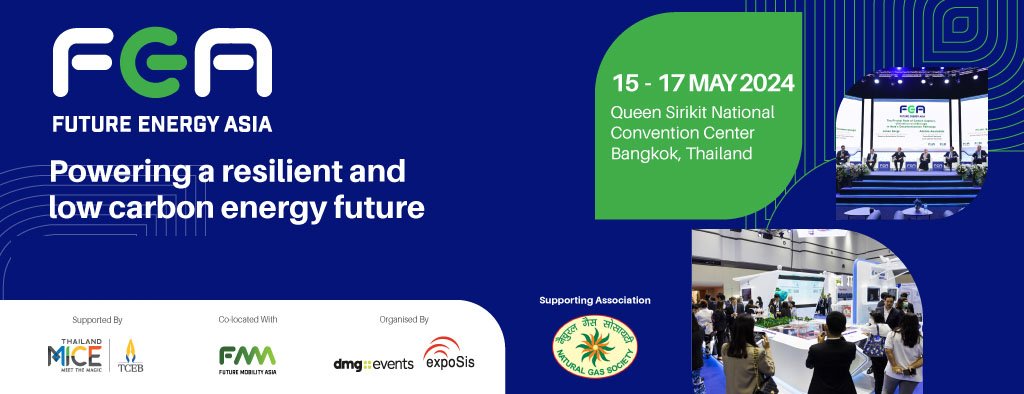




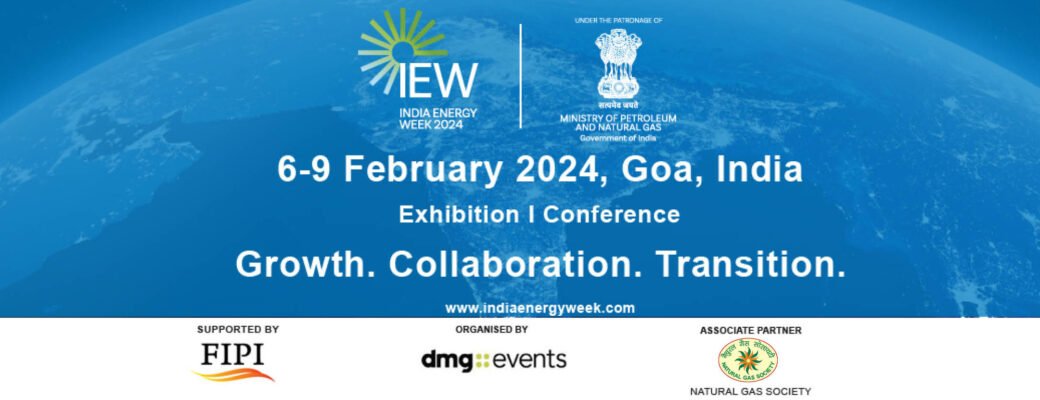

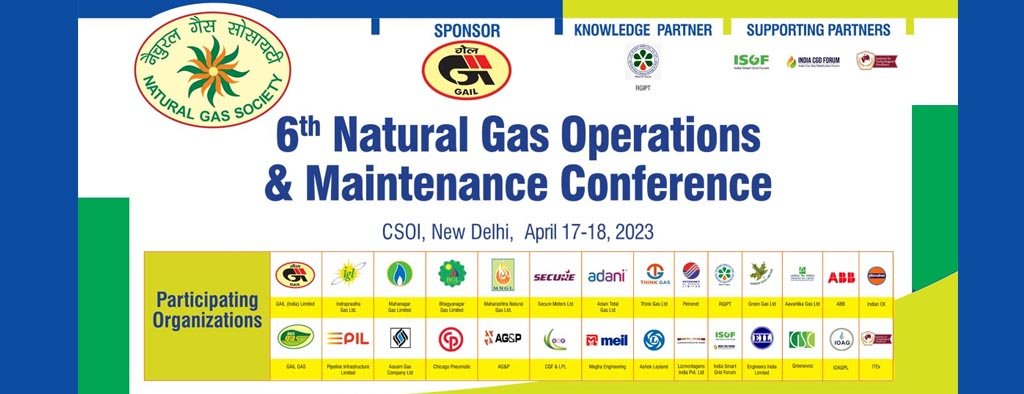
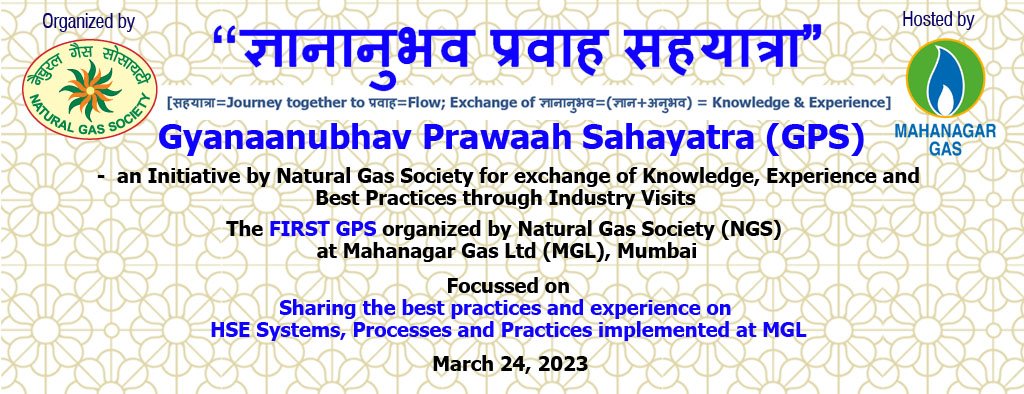
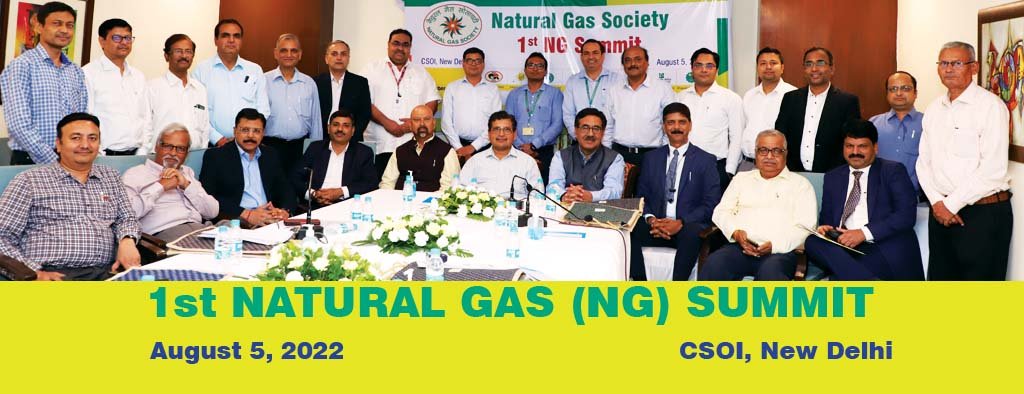
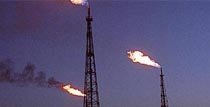 CGD conundrum – India
CGD conundrum – India  Ford India has updated the Aspire with a CNG option. The bi-fuel option will be offered in the Ambiente and Trend Plus trims at a price of Rs 6,27,414 (USD 8,783) and Rs 7,12,314 (USD 9,972) ex-showroom respectively.
Ford India has updated the Aspire with a CNG option. The bi-fuel option will be offered in the Ambiente and Trend Plus trims at a price of Rs 6,27,414 (USD 8,783) and Rs 7,12,314 (USD 9,972) ex-showroom respectively.  Azerbaijan is an important supplier of crude oil and natural gas in the Caspian Sea region, particularly to European markets. Azerbaijan’s exports of natural gas are poised to become a more significant part of the country’s economy.
Azerbaijan is an important supplier of crude oil and natural gas in the Caspian Sea region, particularly to European markets. Azerbaijan’s exports of natural gas are poised to become a more significant part of the country’s economy.